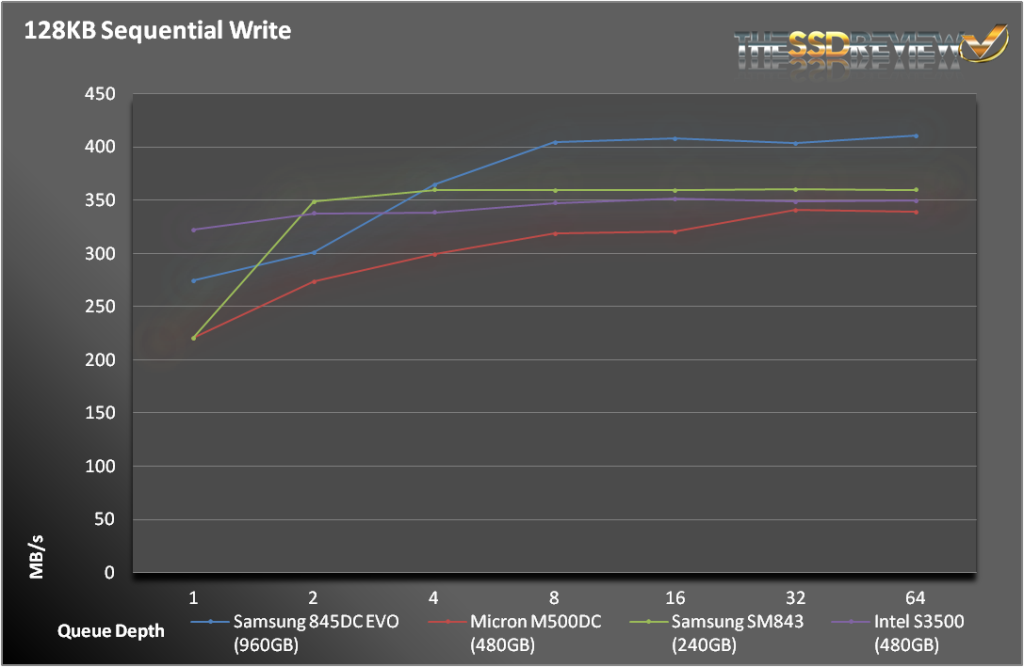MEASURING PERFORMANCE
As with all of our tests, the following tests were performed after a secure erase of the drive. The drive was also conditioned with a predefined workload until it reached steady state. We also test across the entire span of the drive.
For sequential writes, the 845DC got the better of the competition at higher queue depths. In our read tests, it only trailed its SM843 cousin. Overall, it posted really strong sequential numbers.
The 845DC couldn’t really hold a candle to the Micron M500DC for random write performance. On the flip side, the 845DC pulled away from the other drives on the random read tests.
Overall, the 845DC performed well in our tests. For the most part, it performed better than the SM843.
SNIA IOPS TESTING
The Storage Networking Industry Association has an entire industry accepted performance test specification for solid state storage devices. Some of the tests are complicated to perform, but they allow us to look at some important performance metrics in a standard, objective way.
SNIA’s Performance Test Specification (PTS) includes IOPS testing, but it is much more comprehensive than just running 4KB writes with IOMeter. SNIA testing is more like a marathon than a sprint. In total, there are 25 rounds of tests, each lasting 56 minutes. Each round consists of 8 different block sizes (512 bytes through 1MB) and 7 different access patterns (100% reads to 100% writes). After 25 rounds are finished (just a bit longer than 23 hours), we record the average performance of 4 rounds after we enter steady state.
- Preconditioning: 3x capacity fill with 128K sequential writes
- Each round is composed of .5K, 4K, 8K, 16K, 32K, 64K, 128K, and 1MB accesses
- Each access size is run at 100%, 95%, 65%, 50%, 35%, 5%, and 0% Read/Write Mixes, each for one minute.
- The test is composed of 25 rounds (one round takes 56 minutes, 25 rounds = 1,400 minutes)
Our SNIA testing also demonstrated the read performance power of the 845DC. Even with rapid mixing of workloads, you can see that we hit the specifications at 3 of the 4 performance extremes. The only exception was sequential writes, which always have a difficult time hitting specifications in our SNIA testing, the 845DC is no different.
You can also see that the 845DC was pretty well behaved. There is a nice, clean transition between reads and writes, which is what we expect form enterprise SSDs.
 The SSD Review The Worlds Dedicated SSD Education and Review Resource |
The SSD Review The Worlds Dedicated SSD Education and Review Resource | 


Do you think that they will release a 2-bit MLC version as well in the near future? it seems logical right now that Samsung will soon update its MLC 840 Pro and enterprise equal.
I dont see this but have nothing to back my view. I just think the reality of SSD lifespan coupled with low pricing trumps all.